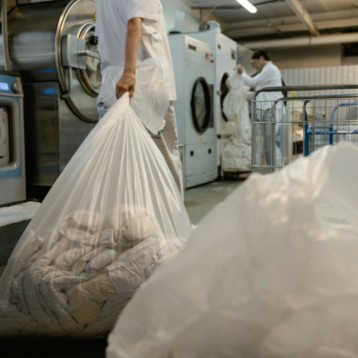|
The new class of material structures developed at MIT may have applications in aviation, space travel, and hazardous waste cleanup. Robert Cohen, Professor of Chemical Engineering at MIT, claims that once it is applied with the substance, gasoline which was spilled on a surface will just roll-off instead of spreading.
Creating a strongly oil-repelling, or “oleophobic” material, presented a challenge for scientists as there are no natural examples of such a material. Although there are numerous natural water-proof, there are no natural oil-proof materials. Unlike water, which has a very high surface tension and tends to form droplets, the tendency of oils and other hydrocarbons is to spread out over surfaces due to their very low surface tension. This difference in surface tension also explains why water will roll off the feathers of a duck, but a duck coated in oil must be washed with soap.
The MIT team overcame the surface-tension problem by designing a type of material composed of specially prepared microfibers that essentially cushion droplets of liquid, allowing them to sit just above the material’s surface. When oil droplets land on the material they rest atop the fibers and pockets of air trapped between the fibers. This characteristic is made possible because of the resemblance to a thin fabric or tissue paper. The large contact angle between the droplet and the fibers prevents the liquid from touching the bottom of the surface and wetting it.
The microfibers are a blend of a common polymer and a specially synthesized molecule called fluoroPOSS, which has an extremely low surface energy. Using a process known as electrospinning, the microfibers can be readily deposited onto many types of surfaces, including metal, glass, plastic and even biological surfaces such as plant leaves.
The researchers have also developed some algorithms that can predict how stable the oil-resistance between a particular liquid and a surface will be. These design equations are based on four structural considerations: the surface’s roughness, the liquid’s surface tension, the spacing of the fibers, and the contact angle between the liquid and the flat surface. Using these relationships, the researchers can design fiber mats that are optimized to repel different hydrocarbons. A nonwoven fabric that can separate water and high-octane fuel has already been created, and is expected to be useful for hazardous waste cleanup.
TFOT has also covered other nano-based developments- self-cleaning windows and reduced fuel consumption using nano-lubricants.
More on MIT’s oil-repelling material can be found in the University’s official press release.












